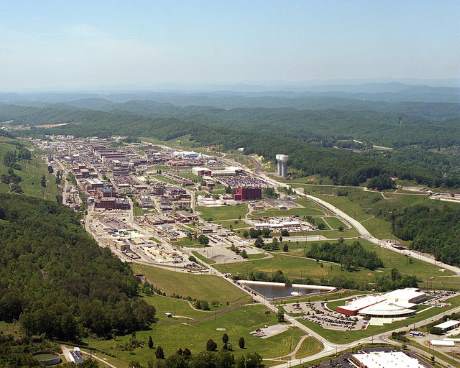The US Nuclear Regulatory Commission (NRC) and Department of Defense have signed a memorandum of understanding (MOU) outlining their respective roles in the cleanup of radium and other unlicensed radioactive materials at military sites. Meanwhile, workers at the Y-12 National Security Complex have completed a project to remove over 2000 containers of legacy wastes two years ahead of schedule.
 |
| Y-12 National Security Complex (Image: NNSA) |
Luminescent radium paint was widely used in vehicle instrumentation and other military applications until the 1960s. The US military has its own program to control or remediate legacy radium contamination and to store and decontaminate equipment containing the material, and is also cleaning up other unlicensed radiological material at its sites. The US Congress gave the NRC jurisdiction over radium and radiation contamination in legislation passed in 2005.
The US Environmental Protection Agency (EPA) oversees cleanup work at some military sites, and the NRC has an independent federal oversight role at others. The MOU, which is the culmination of several years of discussions, sets out two ways in which the NRC will be involved in military cleanup operations.
At sites with EPA oversight, the NRC will limit its involvement to staying informed about remedial actions, oversight activities and issues. At sites without EPA oversight, it will monitor the cleanup of unlicensed radiological material, providing independent federal oversight to confirm that remediation work is adequate to protect public health and safety and the environment.
Waste removal milestone for Y-12
Removal of 2247 containers of mixed wastes from the Y-12 National Security Complex in Tennessee has been completed more than two years ahead of a September 2018 deadline.
Disposition of the material is part of a larger effort to dispose of legacy waste materials, which is a high priority for the US Department of Energy's National Nuclear Security Administration (NNSA).
Mixed waste is defined as material consisting of hazardous and radioactive wastes. The majority of the wastes - about 2100 containers - removed from the Y-12 complex consisted of solid residues that did not require further treatment to meet disposal requirements. The remainder - solid wastes and organic solutions stored in bottles - required multiple treatment and processing steps to reduce the uranium content and where necessary to stabilize or solidify the wastes to meet transportation and disposal requirements.
Out of total of 193 waste shipments, 187 were sent to Energy Solutions' Clive facility in Utah, while six were sent to an "off-site federal facility".
The Y-12 complex is operated by Consolidated Nuclear Security on behalf of the NNSA.
Researched and written
by World Nuclear News




_18570.jpg)
_18938.jpg)
_33584.jpg)
_82983.jpg)





